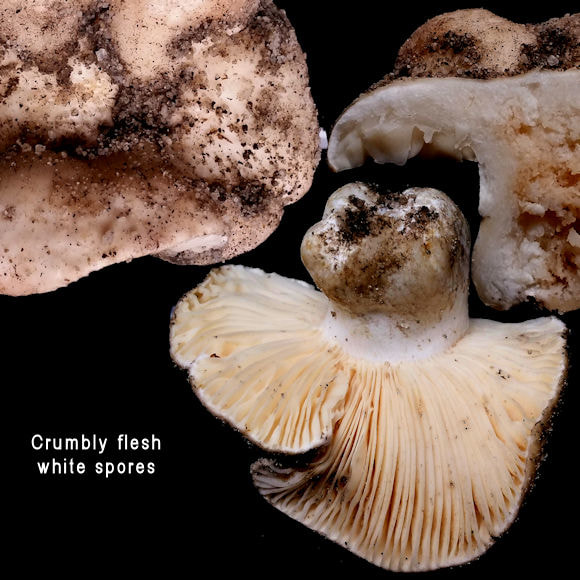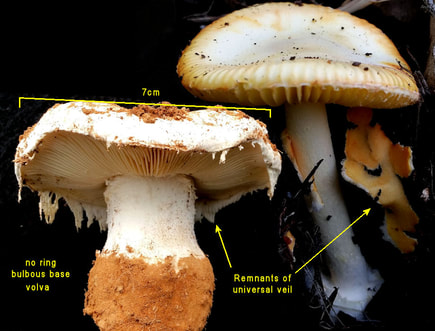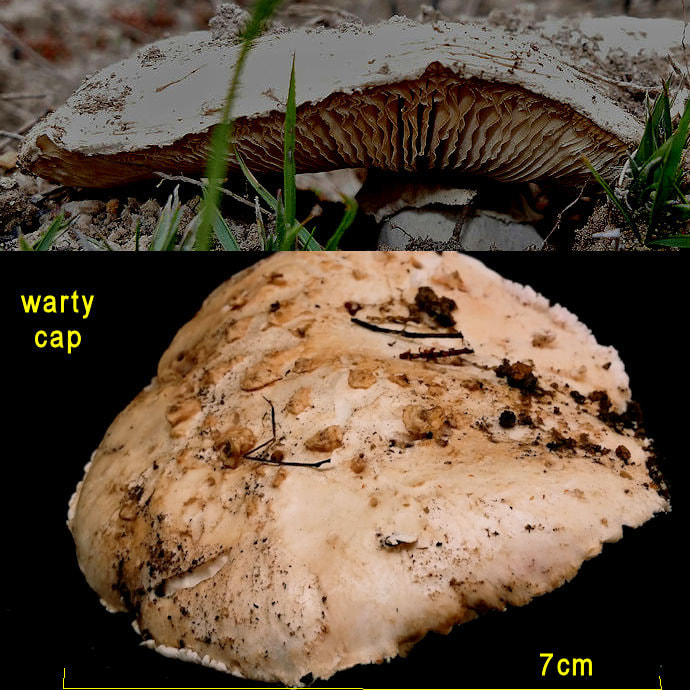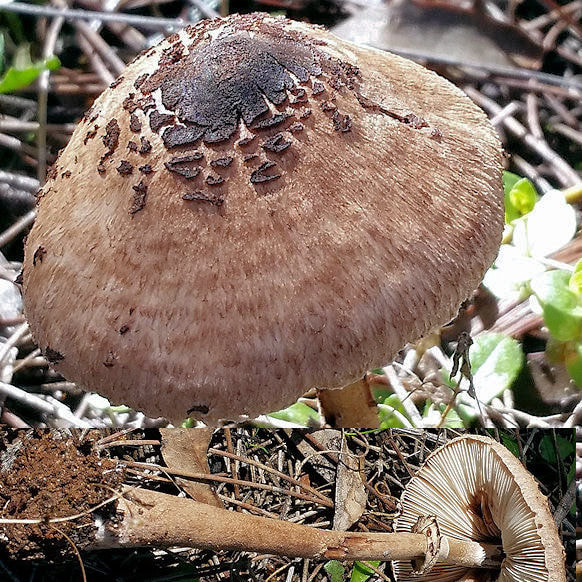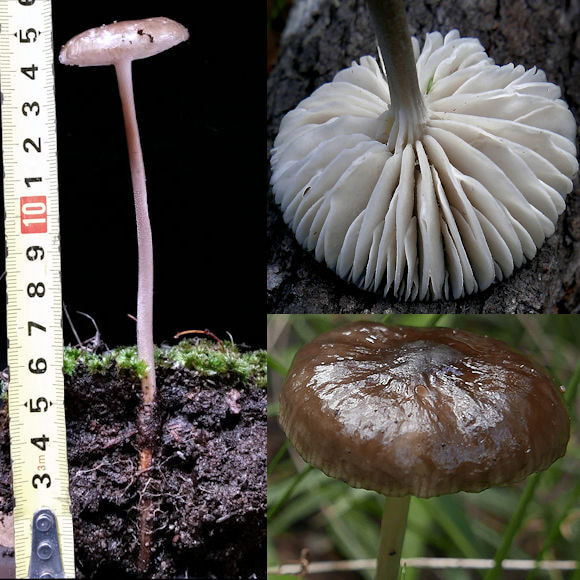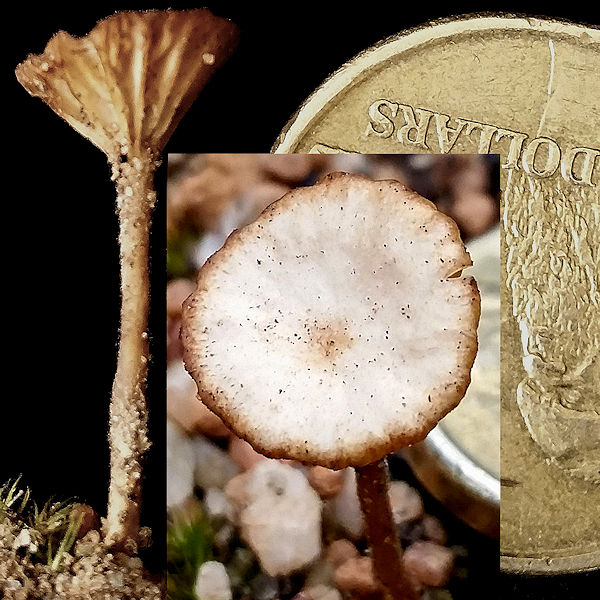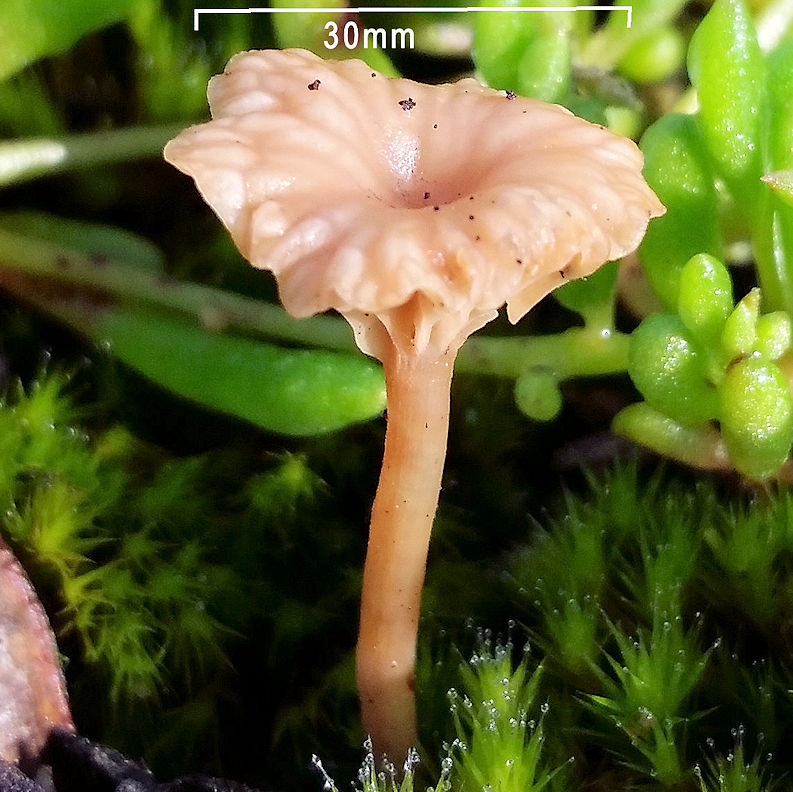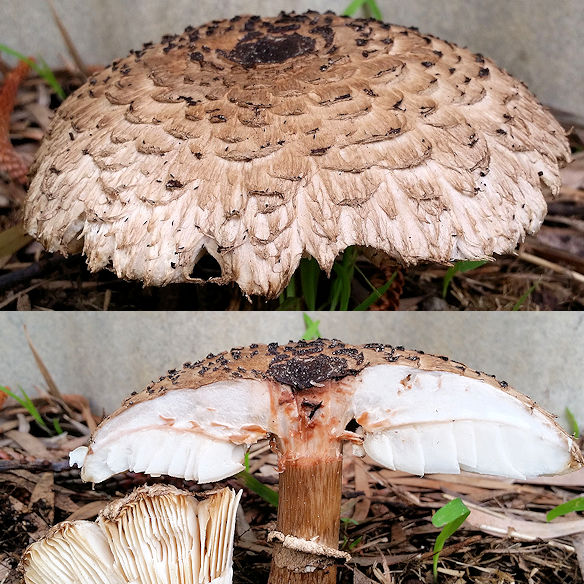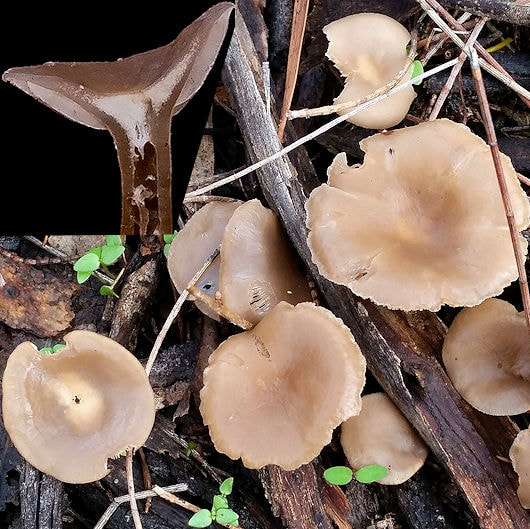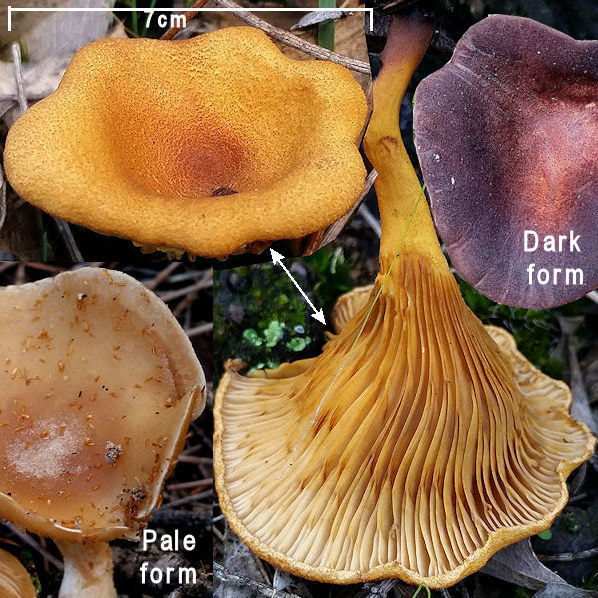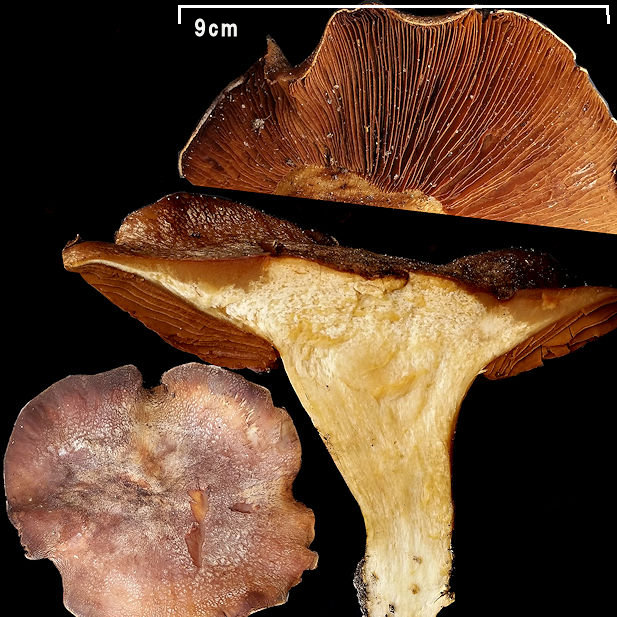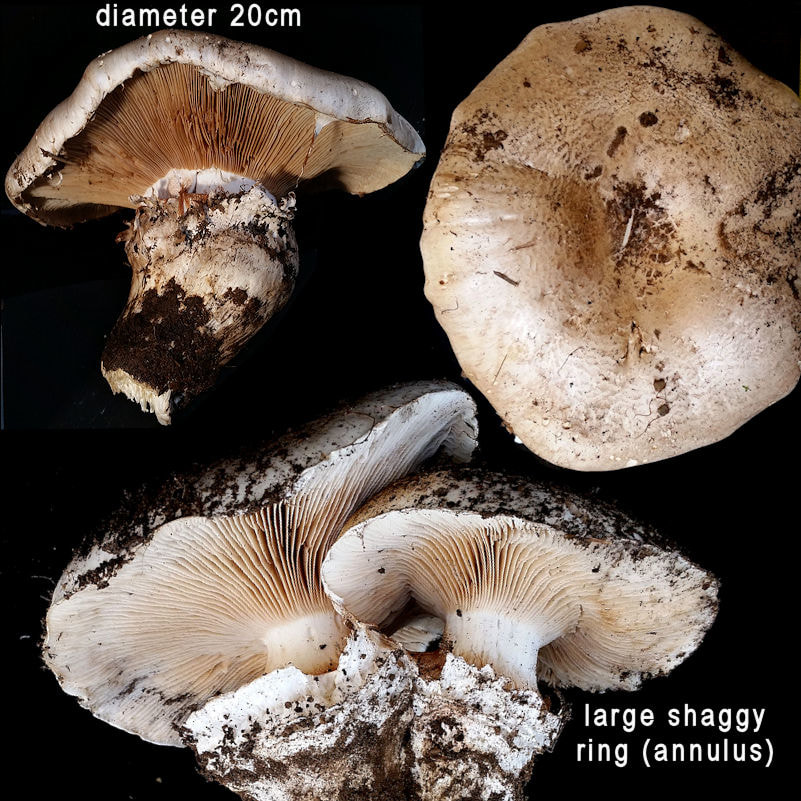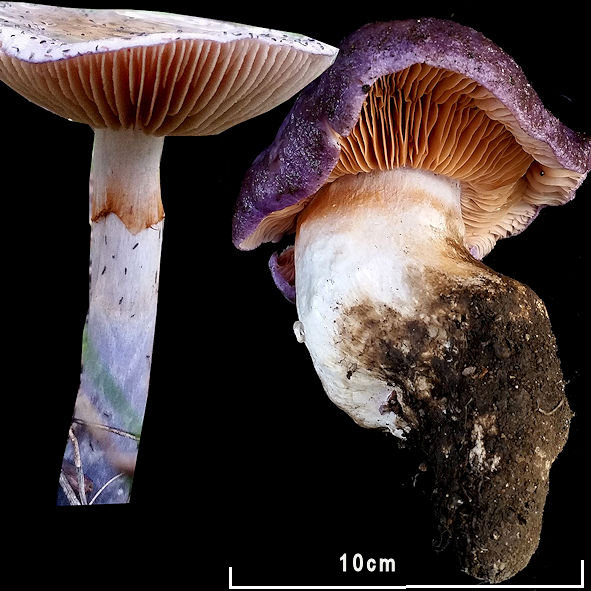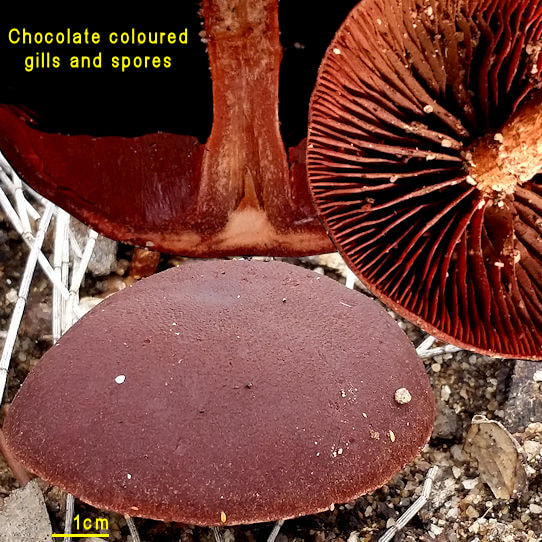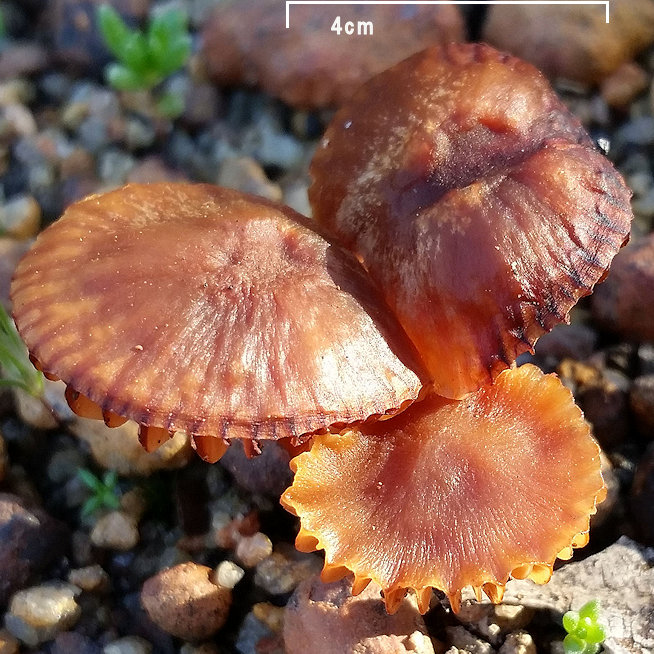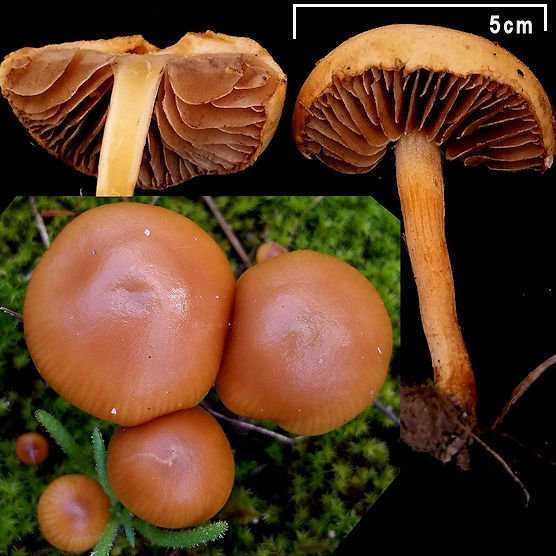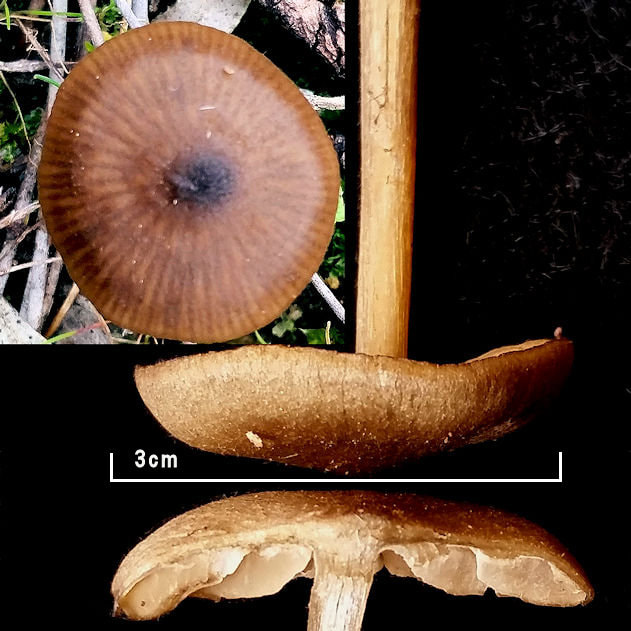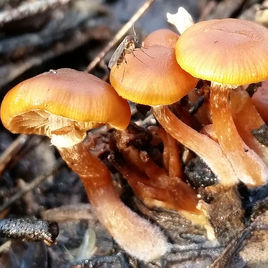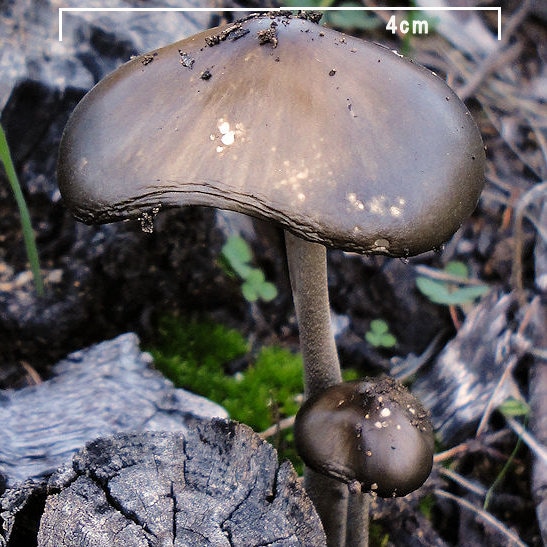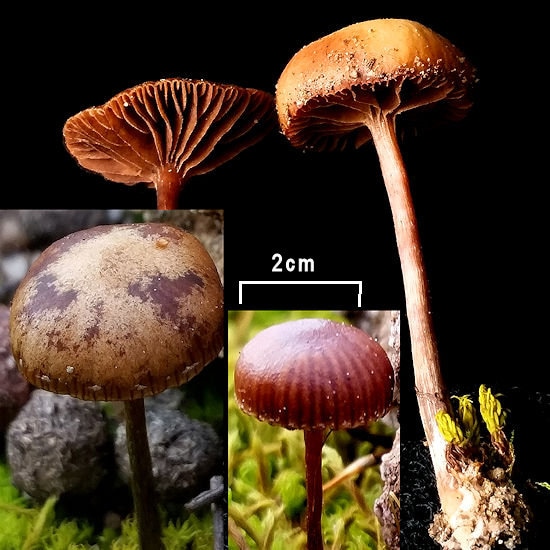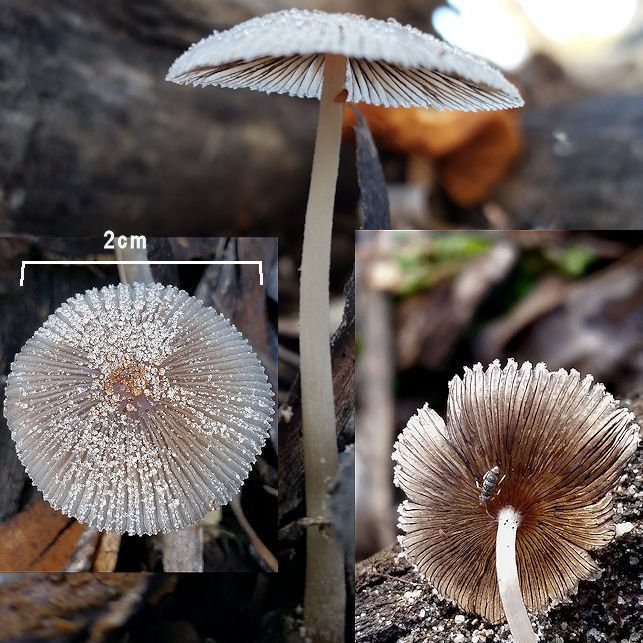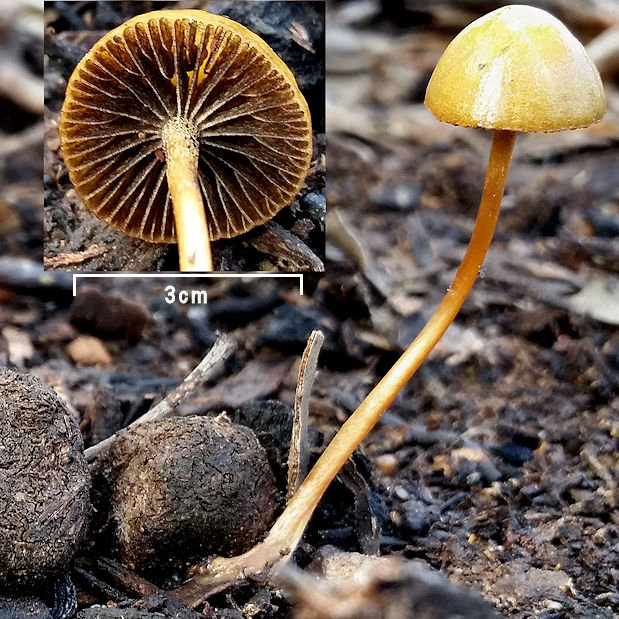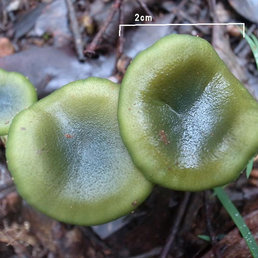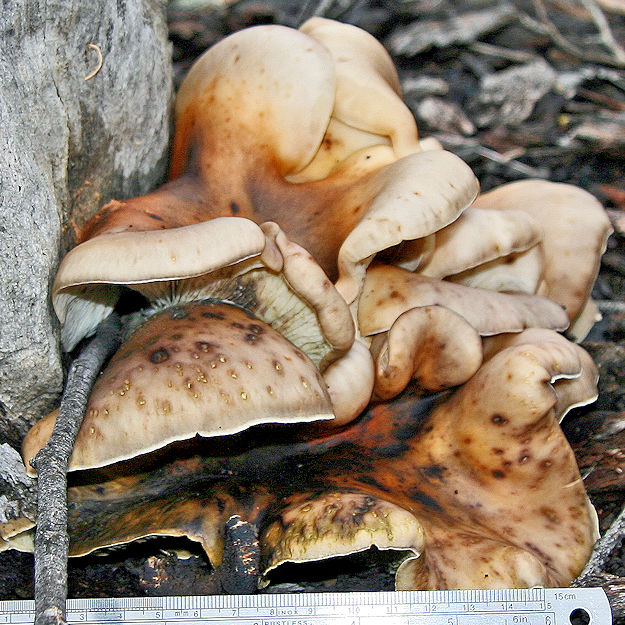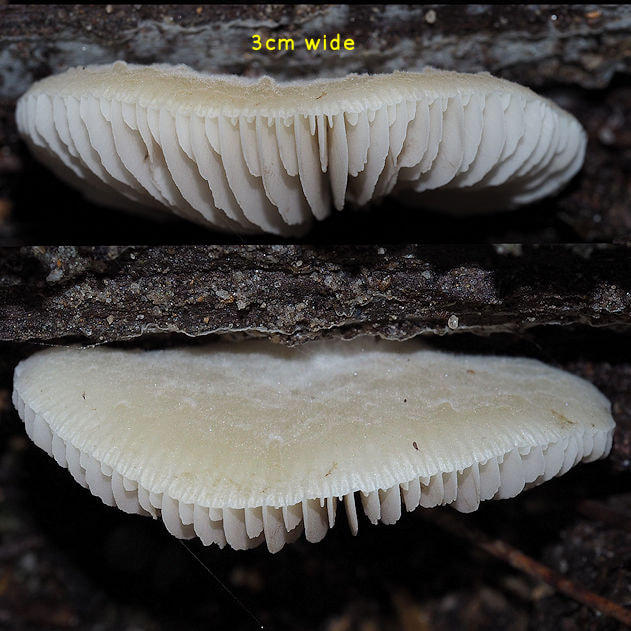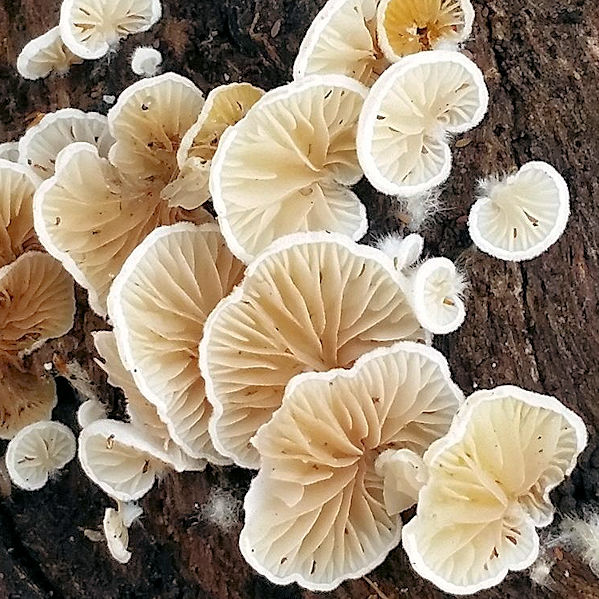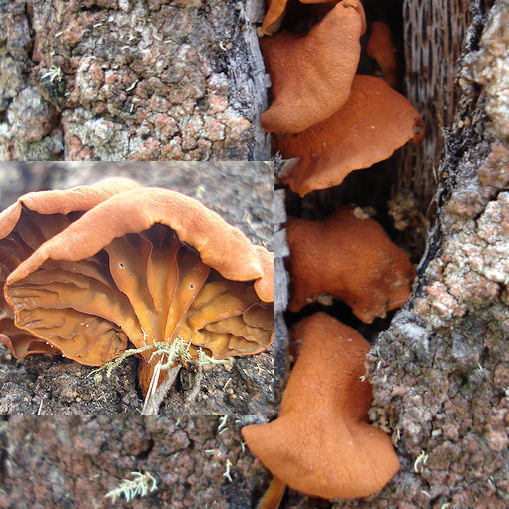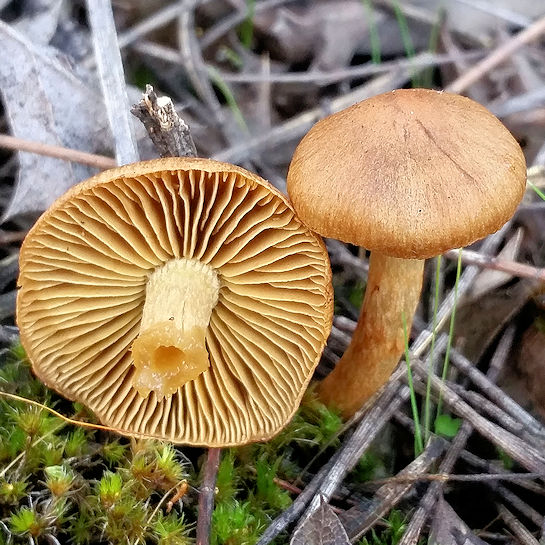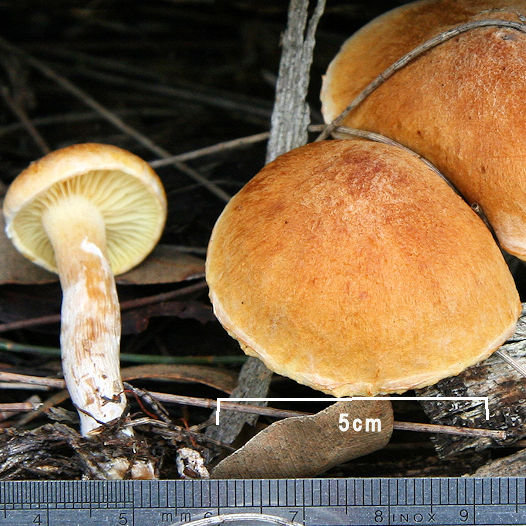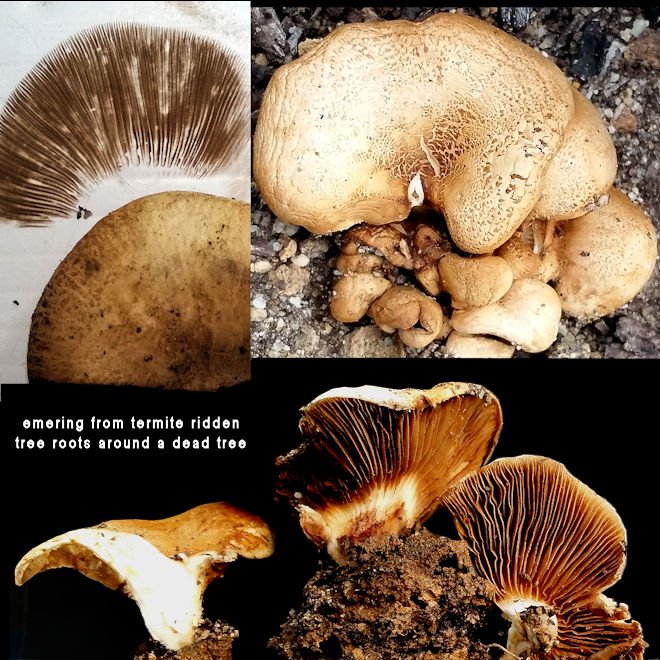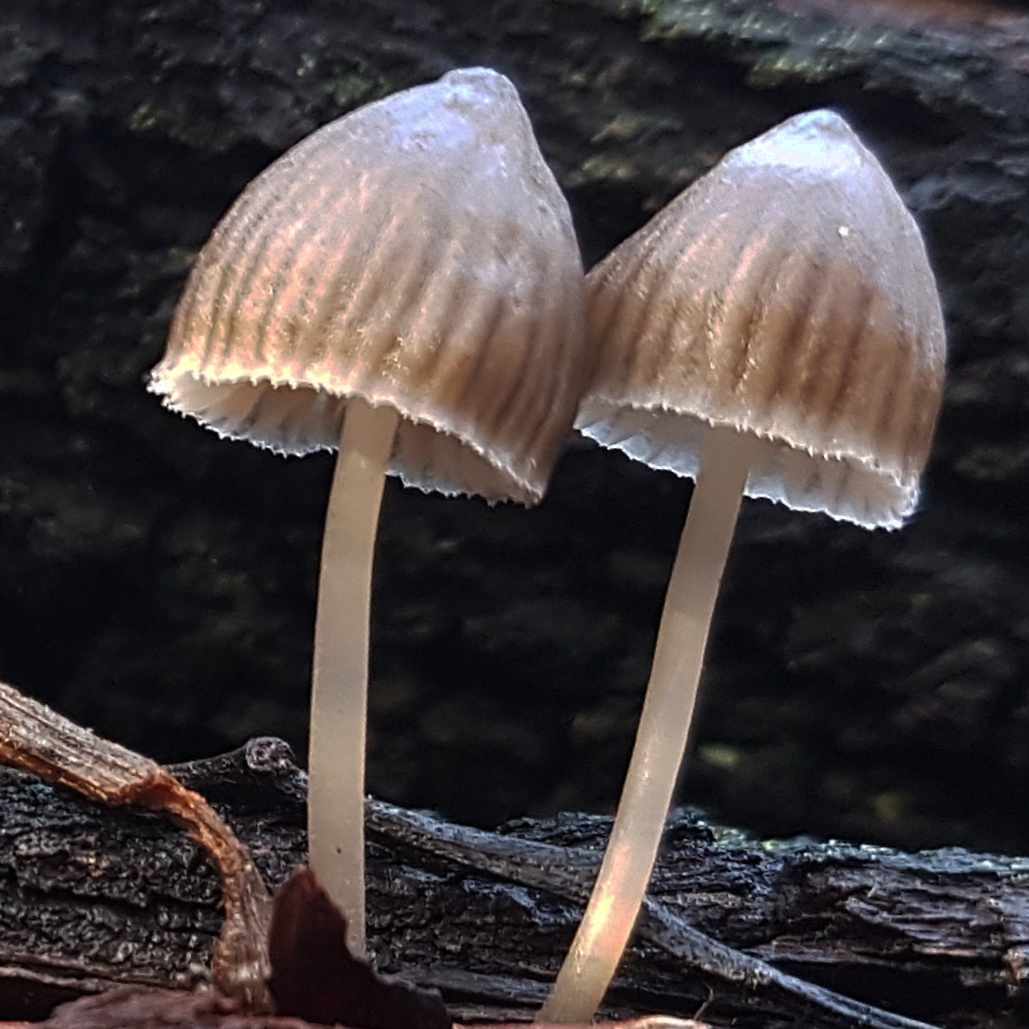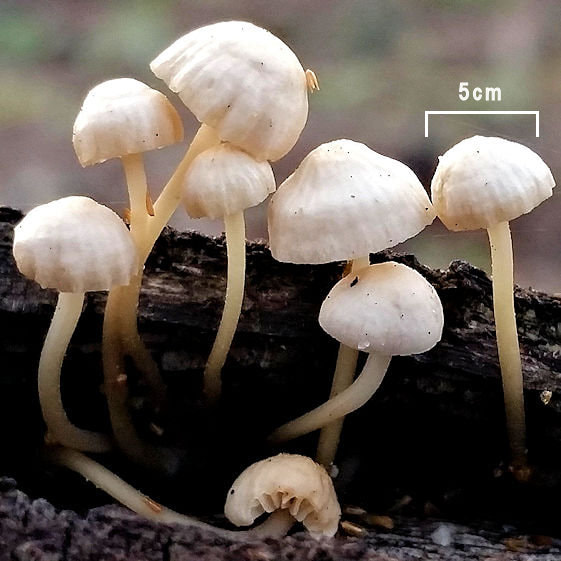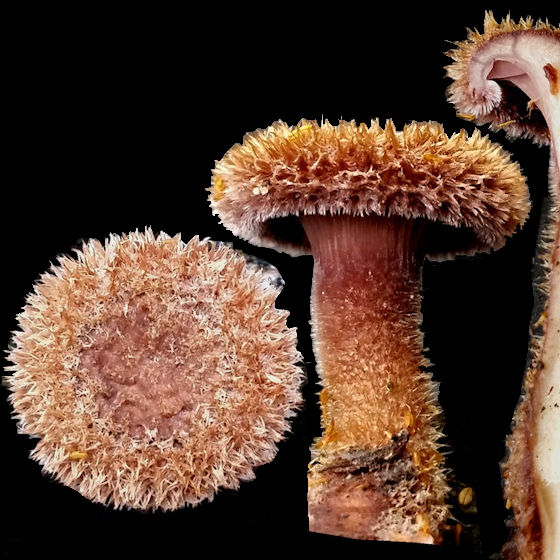AGARICS (MUSHROOMS AND TOADSTOOLS WITH GILLS)
Agarics have a fleshy fruiting body with a cap and gills and a clear stem underneath or on the side as in oyster mushrooms.
Many people are aware of the common names mushrooms and toadstools, but there is a huge range of agarics that vary in size, shape and colour.
Here are fruiting bodies (mushrooms/toadstools) of agarics that we have found in the Narrogin area - Note still not many below but more will be added as they are collected. Note PF- refers to an example in the pictorial field book "Fungi of the Perth Region and beyond"
Many people are aware of the common names mushrooms and toadstools, but there is a huge range of agarics that vary in size, shape and colour.
Here are fruiting bodies (mushrooms/toadstools) of agarics that we have found in the Narrogin area - Note still not many below but more will be added as they are collected. Note PF- refers to an example in the pictorial field book "Fungi of the Perth Region and beyond"
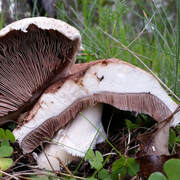 Field mushroom Agaricus campestris
Field mushroom Agaricus campestris
1. Mushrooms (genus Agaricus)
Decomposers and mostly immigrants that are more common on organic rich soils like pasture paddocks, lawns and gardens.
Important features are: a ring on stem, a purple spore print, and dark brown gills that may be pink or white in the bud stage depending on species
click HERE to distinguish mushrooms from toadstools, but make absolutely sure before testing them for edibility.
Decomposers and mostly immigrants that are more common on organic rich soils like pasture paddocks, lawns and gardens.
Important features are: a ring on stem, a purple spore print, and dark brown gills that may be pink or white in the bud stage depending on species
click HERE to distinguish mushrooms from toadstools, but make absolutely sure before testing them for edibility.
2. Other Agarics
In the absence of a better system the agarics are listed by occurrence on wood or soil, then gill colour (starting from light to darker) and spore print.
In the absence of a better system the agarics are listed by occurrence on wood or soil, then gill colour (starting from light to darker) and spore print.
2A Fruiting bodies emerging mostly from soil (but not around dead trees)
2B Agarics emerging on trees, dead wood, and at the base of dead plants
